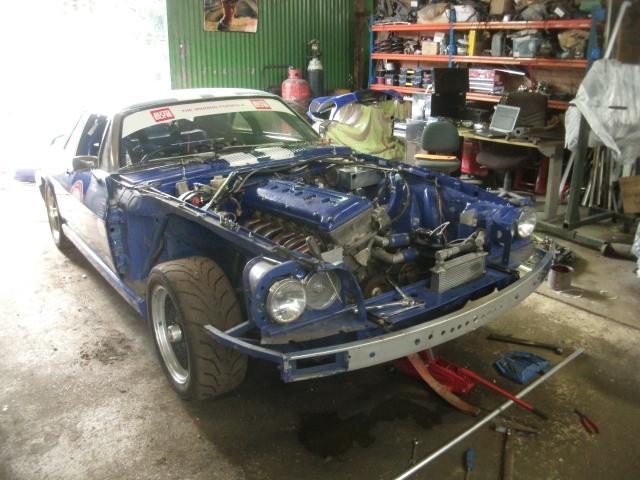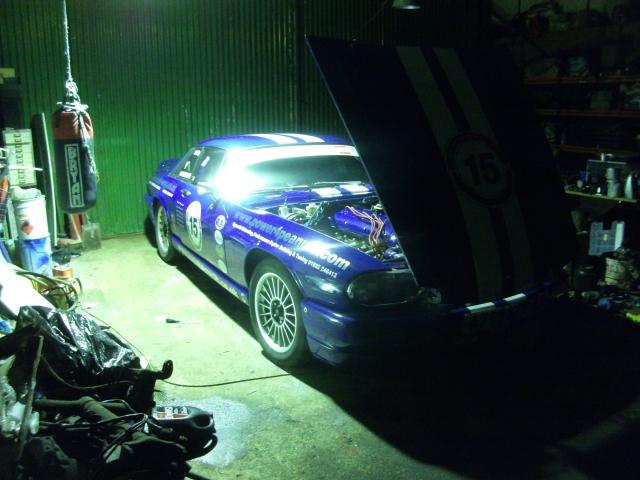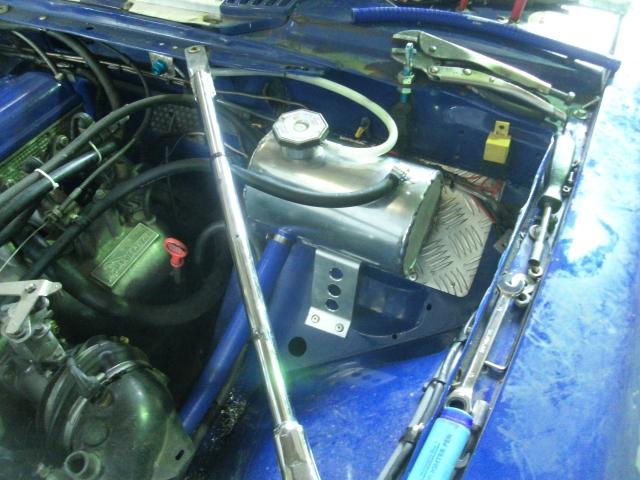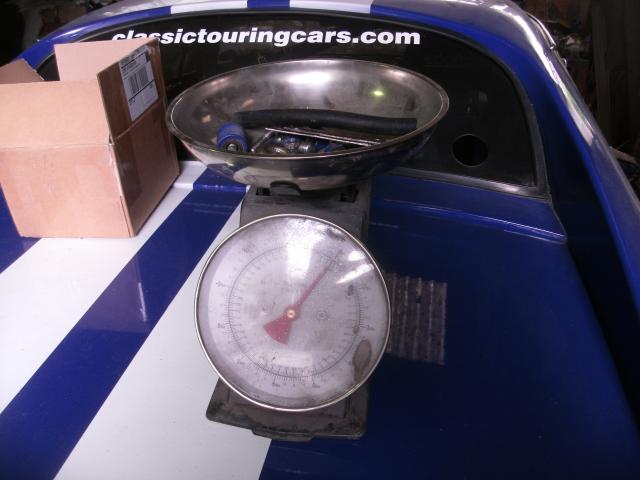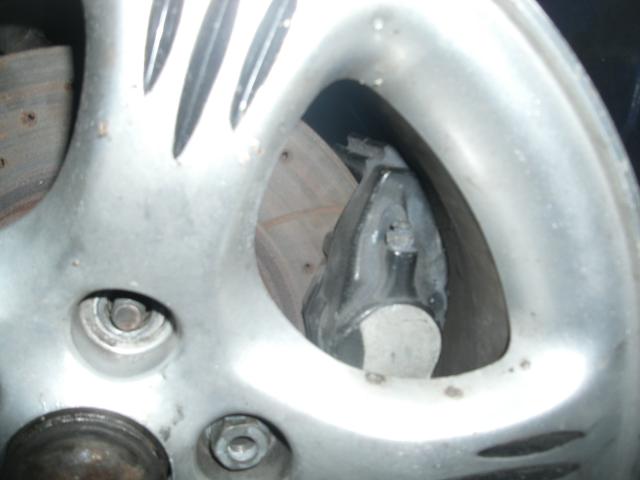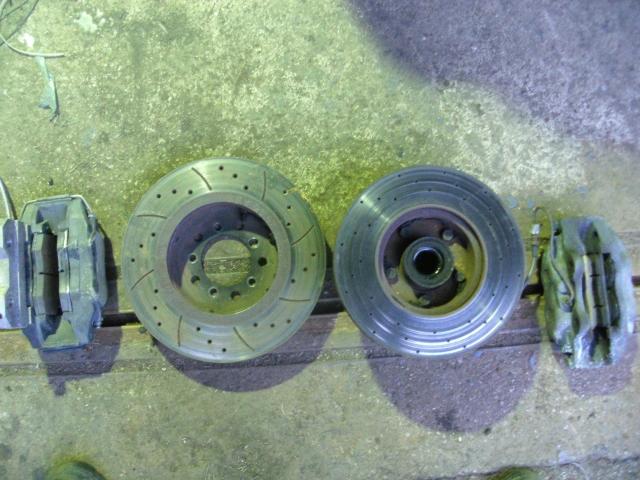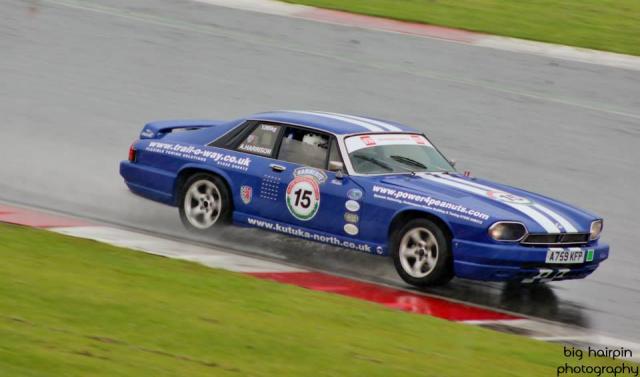
Part 18 - ROAD TRIP!
The first road test did not go well. Well, that’s not true, much of it went very well. The part that didn’t was the sudden suicide of the fuel pump, slightly ironically in a filling station 2 miles beyond my destination. Not much you can do about a fuel pump that, after half an hour of cajoling, generates nothing but heat.
The trip down, however, on a wet February evening, tested two things that are very important. First, I appear to have sealed most of the holes that allow water ingress. Bare shell rebuilds do generate a lot of holes because you take everything off, and it takes an age to find every last hole and seal it back up. I use that shiny aluminium tape, as it’s waterproof, lightweight, sticks and conforms well, better than duct tape. The lexan windows, fitted into the original rubbers with a little extra sealant, all repelled all the water. That’s important too.
A second road test, in the day, in the dry, and a gentle reminder of what a racing car can do in road use. It really is something else. Ramp up the power 30% and drop the weight 30%, they don’t half shift. Small boys turn to gawp, you lean on the throttle for a bit of an audio treat, and you’re doing three times the posted speed limit before you can say “Jesus.” Pulling on to the M1 during a morning commute, passing through XXmph and going for a short shift to 5th gear, realising you’re still only in third, a bit of mental mathematics suggests top speed is now more than the factory had in mind.
Tricky to drive in traffic? Yes. Not hellish, and my starts are definitely improving, clutch control has adjusted to the small movements required, and I no longer leave twin black lines nor stall. It’s all a little bit loud and ostentatious, but what the hell do you expect, it’s a track car. The need to keep the rpm that little bit higher, and the speed at which the rpm increase also means that the power delivery is right there, and there is a bit more of the tail-slinging at low-speed than a policeman might enjoy seeing. I think I’m getting used to the cams too, the need to keep the engine up above 3000rpm isn’t yet instinctual, but I’m getting there.
With the driver’s door lightened to match the passenger side, we’re 50kg lighter than last time we raced. There is still another 40 to come, but there is no time for the fibreglass panels before the first race, we’ll keep what we have for now. As usual we’re out of time, we can’t get every change done we want to, it will have to be a question of testing what we have done so far. To some extent that’s not a terrible plan, because I could tinker and tweak this car forever without ever actually racing it, and I like a bit of racing.
The clutch fix was as simple as dismantling the master cylinder, cleaning it all, and rebleeding the system. Clearly something was bothering it, because it came right straight away, indeed the clutch pedal is fearsomely heavy now, so clearly it was never right to begin with. Damn, I’d just got used to that. Have to re-learn my starts.
I do seem to take her to pieces a lot.
New brakes vs the standard XJS items I've been using for the past 7 years. They're, well, bigger.
They must fit a 16" wheel, and they do. Just. I mean there's a fag paper in it, depending on the type of 16" rim. These are my wets.
Officer David has been welding up a new header tank, which can now be relocated out of the way at last.
I just keep finding things to take off. Everything gets weighed.
Done. Ready for Silverstone. Yes, still a hinged steel bonnet. For now.
And this is why winter road testing helps. Silverstone was moist. Very moist. OK, it was bloody torrential.
The little gadget I bought, the GPS speedo that projects the speed onto the windscreen, well that was brilliant. The average speed zones were where it really helped, no burying your face in the dash and ramming the car in front, the speed’s right there with you. Just as well, because the car’s desire to go is such that holding her down to 50mph is not easy. Future race videos may well show the speed we’re travelling at.
Fuel economy was interesting. It's irrelevant in a racing car, but just how efficiently are these engines running, given we're over 30% above standard power? Well, 25mpg at an average of around 80mph. That’s better than my road car does! Running temp was a bit low, 70-75 degrees, 70lb of oil pressure, both at about 2500rpm. The reason for road use is familiarity with the machine. You find things you don’t on track. The brakelight switch needs adjustment, they stick on after you come off the pedal. The clutch hydraulics need a look, which is disappointing, but one press in three gives you a very long pedal, and that’s disconcerting when the other two are perfectly fine. I’m going to accuse the slave cylinder until I know otherwise.
Another road test, this time a 200 mile trip to a pointless event we didn't get into. Same weekend as the Jags were being smashed up at Brands, as it happens, that's the interval covered here, started all this fiddling in February! But I have re-learned how to get this thing off the line. A few heavy stops and an evening in the garage swapping pad materials about three times finally found what seemed like a proper brake balance that wouldn't try to spin the car. So, time to go racing. Same power, different diff, bigger brakes, 50kg shed. Time to see if we’re proportionately any closer on that pre-93 grid.
Even more important is that the new demister works. If it can cope with a downpour at about 4 degrees on a February night, it ought to handle the mist of a summer shower. Being able to see is important. Keeping the inside dry, and the screen clear is a big advantage in the rain. We like the rain.
The fuel pump, well, it’s a pump. Swapped it, back into action. It happens. Repaired all the wiring damaged in the attempt to diagnose and bypass the fuel pump wiring, the foglight gave its life for the attempted repair. Better for the pump to die in a petrol station than in a race.
The snag list completed, modification time again. There is a further 5kg in the big front brakes I bought. They were cheap, but they are bigger, and lighter. Really. Despite bigger discs, calipers and pads, the aluminium calipers still lose you 5kg over the standard Jaguar items.
The brakes were going to be last on my list. But they're here, they're a bolt-on modification, it seems daft not to do it. It takes a little time to centralise the calipers, and a small deficiency in the spacing of the steering arm on the driver's side is corrected, and the car re-tracked. Camber was set for the Birkett and has not altered since. It went very well in the rain at the Birkett on exactly these settings so that's where it's staying.
